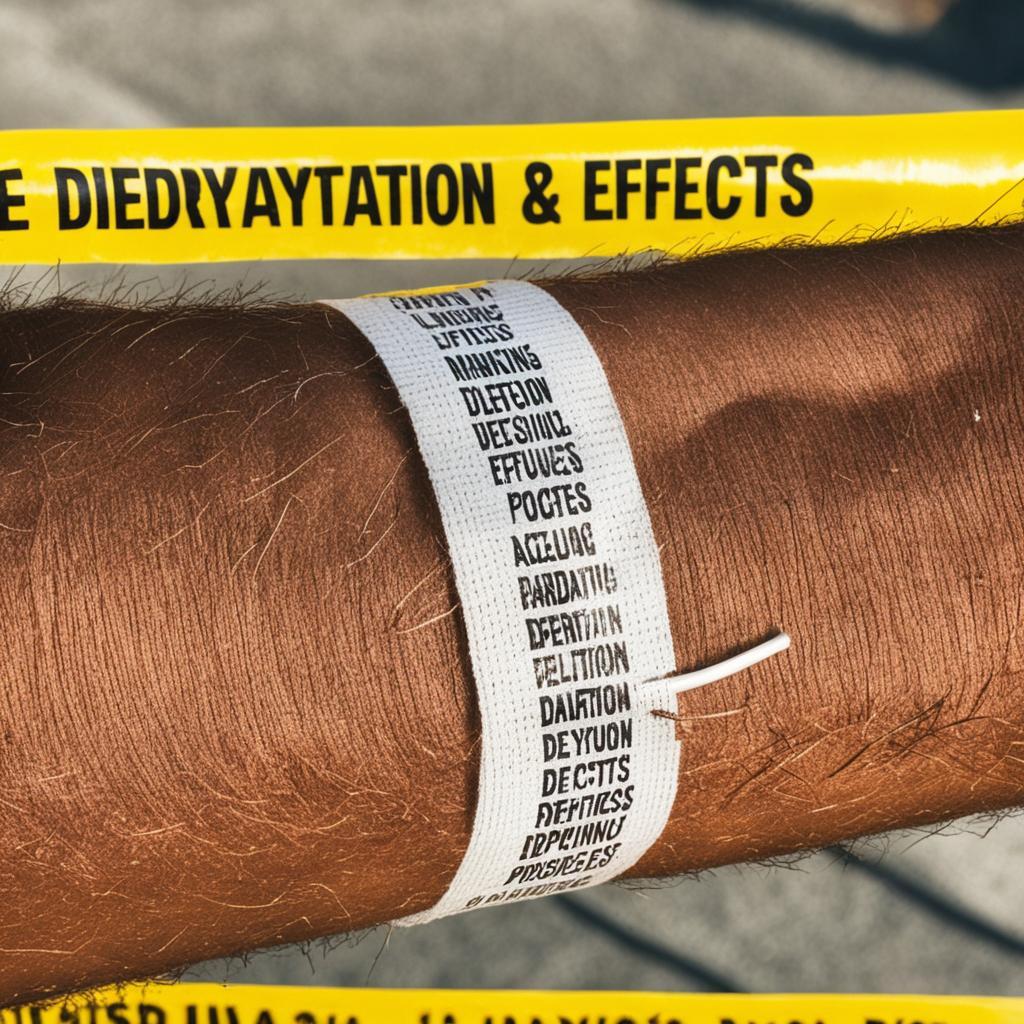Donating plasma can be a unique way to make some extra money while also helping others. If you’re looking for a flexible side hustle, where you can earn cash and contribute to the well-being of others, donating plasma might be the answer. In this guide, I’ll take you through the ins and outs of donating plasma, including the requirements, process, and compensation. We’ll also discuss the ethical considerations of plasma donation and explore alternative ways to make money.
Before we dive in, it’s important to note that donating plasma is a safe and regulated process that requires you to meet specific eligibility criteria. If you’re eligible and ready to embark on this rewarding journey, let’s explore how you can make money by donating plasma and make a positive impact on others’ lives.
Key Takeaways
- Donating plasma is a way to make money while helping others.
- Plasma is the clear liquid part of blood that contains various beneficial components.
- To donate plasma, you need to meet certain eligibility criteria, including age, weight, and health requirements.
- Prepare yourself for plasma donation by staying hydrated, eating a healthy diet, and completing necessary paperwork.
- The donation process typically takes about an hour and may involve a basic physical examination and blood draw.
What Is Plasma?
Blood plasma is the clear liquid part of blood that consists of water, enzymes, proteins, and antibodies. It is different from donating whole blood to organizations like the Red Cross.
Plasma plays a crucial role in the body’s immune system as it contains antibodies that help fight off infections. Additionally, it serves as a transport medium for nutrients, hormones, and waste products throughout the body. This clear yellowish liquid makes up about 55% of the total volume of blood and is distinct from the cellular components like red and white blood cells.
During a plasma donation, only the plasma is collected, while the other components are returned to the donor. This allows for more frequent donations as the body can quickly replace the donated plasma.
Plasma is a valuable resource that is used in various medical treatments and therapies. Donating plasma can help save lives and improve the health of patients in need.
Are You Eligible To Donate Plasma?
To be eligible to donate plasma, you must meet certain requirements. These include:
- Age Requirement: You must be between the ages of 18-69 to donate plasma.
- Weight Requirement: You must weigh over 110 pounds in order to donate plasma.
- Physical Examination: You will need to pass a physical examination to ensure you are in good health.
- Infectious Diseases: You must be free of infectious diseases such as HIV and hepatitis.
- Hemoglobin Levels: Your hemoglobin levels must be within the acceptable range.
- Iron Levels: Your iron levels must be sufficient for donation.
- Government ID: You will need to present a government ID or Social Security card as proof of citizenship.
Meeting these requirements ensures the safety of both donors and recipients. It’s important to remember that eligibility criteria may vary slightly depending on the specific donation center.
Donation Eligibility Checklist
| Requirement | Criteria |
|---|---|
| Age | Between 18-69 years old |
| Weight | Over 110 pounds |
| Physical Examination | Pass basic health check |
| Infectious Diseases | Free of HIV, hepatitis, and other infectious diseases |
| Hemoglobin Levels | Within acceptable range |
| Iron Levels | Sufficient for donation |
| Government ID | Present valid government ID or Social Security card |
Donating plasma can be a rewarding experience, but it’s essential to ensure you meet all the eligibility requirements to contribute safely. Your generosity can make a significant difference in the lives of those in need.
How To Donate Plasma
When it comes to donating plasma, a few preparations can help ensure a smooth and successful donation process. Here are some important steps to follow:
Hydrate before Donation
Prior to your plasma donation, it’s crucial to stay hydrated. Drinking plenty of fluids, especially water, helps optimize the plasma volume in your body, making the collection process more efficient and comfortable.
Healthy Eating
Eating a nutritious meal before donating plasma is essential. A balanced diet provides your body with the necessary nutrients that contribute to your overall well-being. Opt for foods rich in iron and protein to help maintain your health.
Avoid Caffeine and Alcohol
It’s recommended to steer clear of caffeine and alcohol before your plasma donation. Caffeine can cause dehydration, while alcohol can affect your eligibility to donate plasma. It’s best to prioritize water and hydrating beverages instead.
Prepare Necessary Paperwork
Before heading to the donation center, make sure to gather all the necessary paperwork. This typically includes proof of address, a valid photo ID, and your Social Security card or another legal government ID. Having these documents ready will help expedite the check-in process at the center.
By following these guidelines, you’ll create the best conditions for a successful plasma donation experience. Remember, staying hydrated, maintaining a healthy diet, avoiding caffeine and alcohol, and organizing your paperwork in advance are the key steps to a smooth donation process.
| Preparations before Donation | Benefits |
|---|---|
| Hydrate before donation | Ensures efficient plasma collection |
| Follow a healthy diet | Promotes overall well-being |
| Avoid caffeinated drinks and alcohol | Prevents dehydration and ensures eligibility |
| Prepare necessary paperwork | Streamlines the check-in process |
I’ll share more information in the next section about the duration of the plasma donation process and how often you can donate plasma.
How Long Does It Take To Donate Plasma?
When it comes to donating plasma for the first time, the process typically takes around an hour and a half to two hours. However, subsequent donations can usually be completed in about an hour. Let me walk you through the plasma donation process:
- Health History Questionnaire: Firstly, you will be asked to complete a health history questionnaire. This helps ensure your suitability for plasma donation and identifies any potential risks or concerns.
- Basic Physical Examination: Next, you will undergo a basic physical examination. This assessment typically involves checking your vital signs, such as blood pressure and heart rate, to ensure you are in good health.
- Blood Draw and Separation: Once the questionnaire and examination are complete, the plasma donation process begins. A skilled healthcare professional will insert a needle into your arm to access a vein. They will then use a plasmapheresis machine to draw blood and separate the plasma from the other components. The machine returns the plasma-less blood back to your body while collecting the plasma in a separate container.
Throughout the entire process, you will be closely monitored by trained staff to ensure your comfort and safety. It’s important to note that the duration of the donation process may vary slightly depending on factors such as your individual circumstances and the efficiency of the donation center.
Now that you have an understanding of how long it takes to donate plasma, let’s move on to discussing how often you can donate and the potential frequency limits.
But before we do that, take a look at the image below to get a visual representation of the plasma donation process:
How Often Can You Donate Plasma?
In general, donors can donate plasma no more than twice a week with at least 24-48 hours between donations. It’s important to adhere to the “twice a week rule” to allow your body enough time to replenish the plasma that has been donated. This ensures that you maintain your overall health and well-being.
Staying hydrated is also crucial when it comes to plasma donation. Hydration helps your body replace the lost plasma more efficiently, making the donation process smoother and more comfortable. Remember to drink plenty of fluids before and after each donation.
Guidelines for Plasma Donation Frequency
| Donation Frequency | Time Between Donations |
|---|---|
| No more than twice a week | 24-48 hours apart |
Does It Hurt To Donate Plasma?
Donating plasma involves a process similar to donating blood, and some discomfort is to be expected. However, the pain level in plasma donation is generally low. Most donors describe the feeling of the needle prick as a mild bee sting. This sensation lasts for just a moment and quickly subsides.
During the donation, an IV needle will be used to draw your blood and separate the plasma. The needle is inserted into a vein in your arm and might cause temporary discomfort.

Despite the initial sensation, many donors find the overall discomfort during the donation to be minimal. The process typically takes around an hour and a half to two hours for first-time donors and about an hour for subsequent donations.
It’s important to remember that while there may be some discomfort during the donation process, the benefits of donating plasma greatly outweigh any temporary discomfort.
Benefits of Donating Plasma
Donating plasma offers more than just monetary compensation. By donating plasma, you have the opportunity to make a positive impact on the lives of others and contribute to the development of life-saving treatments.
Your plasma can be used to treat various medical conditions and help patients in need. It plays a crucial role in the creation of medications that save lives and improve the health and well-being of individuals around the world.
Plasma Donation Benefits:
- Saving Lives: Your plasma has the potential to save lives and make a difference in the lives of others. Each donation can help provide essential medical treatments and therapies for patients in need.
- No Need for Appointments: Some donation centers offer the convenience of walk-in appointments, allowing you to donate plasma regularly without the need for pre-scheduled appointments. This makes it easier to incorporate plasma donation into your schedule and contribute to the cause consistently.
- Healthy Habits Encouragement: Regular plasma donation promotes healthy habits such as staying hydrated and maintaining a nutritious diet. These healthy practices can have a positive impact on your overall well-being.
Donating plasma is not only financially rewarding but also emotionally fulfilling, knowing that you are playing a crucial role in saving lives and improving the health of others.
Ethical Concerns With Donating Plasma
When considering plasma donation, it is essential to address the ethical considerations surrounding this practice. One of the primary concerns is that plasma is often sold to companies that profit from its use. While plasma donors altruistically donate their plasma to help others, they may not have direct knowledge of the specific businesses that receive their plasma or how it is utilized to develop various products.
This lack of transparency raises questions about the plasma recipient’s anonymity and the potential for their plasma to be used for purposes that may conflict with an individual’s personal beliefs or values. It’s crucial for donors to be aware of these realities and to make an informed decision about whether they are comfortable with the potential outcomes of their plasma donations.
However, it is important to note that without plasma donors, many life-saving treatments and therapies would not be possible. By making a conscious decision to donate plasma, individuals can potentially save lives and contribute to advancements in medical science. It is a personal choice that requires careful consideration of the ethical implications.
“Plasma donation is an opportunity to make a difference in people’s lives, but it is essential to be aware of the ethical concerns associated with the process. Donors should educate themselves about the plasma industry and consider whether they are comfortable with the potential uses of their plasma. Transparency and informed decision-making are key.”
In order to gain a better understanding of the ethical considerations, let’s take a closer look at the potential concerns:
| Ethical Considerations | Description |
|---|---|
| Plasma Recipient Anonymity | Donors may not have knowledge of the specific businesses that receive their plasma or what products it is used to create. |
| Profit from Plasma Donation | The plasma industry is driven by profit, as companies purchase plasma to develop and sell various products. |
While these ethical concerns should not be dismissed, it is important to acknowledge that plasma donation remains a crucial and potentially life-saving act. By weighing the ethical considerations against the impact it can have on the medical community, individuals can make an informed decision that aligns with their values.

How Much Do You Get Paid To Donate Plasma?
When it comes to donating plasma, the payment you receive can vary based on several factors:
- Donation Frequency: How often you donate plasma can affect your payment amount.
- Plasma Quantity: The amount of plasma you donate in each session can impact your payment.
- Body Weight: Your body weight may also play a role in determining your compensation.
- Donation Center Choice: Different donation centers may offer varying payment rates.
The typical payment range for donating plasma is between $20 and $60 per donation. First-time donors and those with higher body weight may receive higher compensation. Some donation centers may even offer additional incentives or rewards.
If you would like to see an example of payment rates based on these factors, here is a table outlining the potential earnings for different scenarios:
| Donation Frequency | Plasma Quantity | Body Weight | Payment Range |
|---|---|---|---|
| Twice a week | 500 ml | 150 lbs | $40 – $50 |
| Once a week | 750 ml | 180 lbs | $50 – $60 |
| Twice a week | 800 ml | 200 lbs | $55 – $65 |
Please note that the table above is an example and actual payment rates may vary. To get the most accurate information, it is recommended to contact your local donation center directly.
Remember, the payment you receive for donating plasma is not only a way to make money, but also a contribution towards helping others in need.
Now that you have a better understanding of the payment factors involved in plasma donation, let’s explore where you can donate plasma in the next section.
Where To Donate Plasma
When it comes to donating plasma, choosing the right donation center is crucial. You want to ensure that the center is FDA-approved and trustworthy. Fortunately, there are several reputable donation centers located across the United States that meet these criteria.
- B Positive: With multiple locations nationwide, B Positive is known for its commitment to safety and high-quality plasma collection.
- Biolife: Biolife operates numerous centers across the country, providing convenient options for donors to contribute to life-saving efforts.
- Biotest Plasma Center: Biotest Plasma Center is a well-established donation center that maintains FDA-approved standards in its collection processes.
- BPL Plasma: BPL Plasma is a trusted name in plasma donation, with various locations striving to ensure a positive experience for donors.
- CSL Plasma: CSL Plasma operates multiple centers across the United States, offering flexible donation hours and a streamlined donation process.
- GCAM Plasma: GCAM Plasma is known for its commitment to donor satisfaction and safe plasma collection practices at its centers.
- Grifols: Grifols is a well-respected donation center that upholds FDA regulations and maintains a strong reputation for excellence.
Each donation center may have different payment methods available to compensate donors for their contributions. Some centers provide prepaid debit cards, while others offer rewards points that can be redeemed for various items. Be sure to inquire about the specific payment methods offered by the donation center of your choice.

Can You Really Make Money Donating Plasma?
Yes, you can make money donating plasma. Depending on your donation frequency, you can earn up to $700 in your first month. The payment range for each donation is typically from $20 to $60, with first-time donors and those with higher body weight potentially earning more.
| Donation Frequency | Earning Potential |
|---|---|
| Twice a week | $700 in the first month |
| Once a week | $280-$340 per month |
| Once every two weeks | $140-$170 per month |
Donating plasma can be a lucrative side hustle, especially if you have a flexible schedule and can donate frequently. The amount you can earn is directly related to how often you donate and how much plasma you are able to contribute during each session.
“I was amazed at how quickly the money added up when I first started donating plasma. I was able to earn over $500 in my first month, which was a great boost to my income. I now make it a regular part of my routine and earn around $300 per month by donating twice a week.”
If you’re looking for ways to make extra cash, donating plasma is a viable option. It not only provides financial benefits but also helps save lives and contributes to advancing medical research. However, it’s important to consider the ethical considerations, as well as any potential risks and side effects associated with plasma donation.
So, if you’re interested in making money by donating plasma, take the time to research reputable donation centers in your area and familiarize yourself with the process. Remember to follow the guidelines for hydration, healthy eating, and proper documentation to ensure a smooth and successful donation experience.
Donation Centers in the United States
- B Positive
- Biolife
- Biotest Plasma Center
- BPL Plasma
- CSL Plasma
- GCAM Plasma
- Grifols
Each donation center may have its own payment methods, such as prepaid debit cards or rewards points. Be sure to inquire about the specific payment options when selecting a donation center.
Risks and Side Effects of Donating Plasma
Donating plasma is generally a safe process, but it’s important to be aware of the potential risks and side effects involved. By understanding these factors and taking appropriate precautions, you can ensure a smooth and positive donation experience.
Common Side Effects
After donating plasma, it is common to experience some temporary side effects. These can include:
- Discomfort: You may feel mild discomfort or a slight pinch when the needle is inserted.
- Fatigue: Donating plasma can temporarily make you feel tired, so it’s important to rest afterward.
- Dizziness: Some donors may experience dizziness or lightheadedness during or after the donation process. If this occurs, inform the staff immediately.
- Bruising: Bruising at the site of needle insertion is another common side effect. This usually resolves on its own within a few days.
Preparation for Plasma Donation
Proper preparation before donating plasma can help minimize the risk of side effects. Here are a few important steps to take:
- Stay well-hydrated: Drink plenty of water in the days leading up to your donation appointment to ensure your body is adequately hydrated.
- Eat a nutritious meal: Prioritize nutrient-rich foods, such as fruits, vegetables, and lean proteins, to fuel your body before donation.
Long-term Side Effects
Long-term side effects from frequent plasma donation are rare. However, it’s important to be aware of the potential risks, which may include:
- Iron deficiency: Frequent plasma donation can deplete iron stores in the body, leading to anemia. To prevent this, maintain a balanced diet that includes iron-rich foods or consider taking iron supplements.
- Scar formation: Scar tissue may develop at the site of needle insertion, especially with repeated donations. This is more common in individuals who have sensitive skin or a history of scarring.
Although these long-term side effects are uncommon, it’s essential to monitor your health and report any concerning symptoms to your healthcare provider. They can provide appropriate guidance and address any questions or concerns you may have.

Is Donating Plasma Ethical?
The decision to donate plasma raises important ethical considerations. While donating plasma has the potential to save lives, it is important to acknowledge that plasma is sold to businesses that profit from its use. It is essential for individuals to reflect on their personal values and determine whether they are comfortable with this arrangement.
“Donating plasma is a complex issue that involves both altruism and commerce. It is crucial for individuals to weigh the potential benefits of helping others against the ethical implications of selling plasma.”
For those who prioritize saving lives and supporting medical advancements, the act of donating plasma can be considered ethically sound. By providing plasma, individuals are directly contributing to the development of life-saving treatments and therapies.
However, it is important to acknowledge the commercial aspect of plasma donation. Plasma is ultimately sold to companies that use it for various purposes, which may include creating pharmaceutical products or conducting research. Donors may not have full knowledge of which specific businesses receive their plasma or how it is used.
It is crucial for prospective plasma donors to educate themselves about the process and fully understand the ethical implications. Various factors, including personal values, beliefs, and individual circumstances, should be taken into account when deciding whether donating plasma aligns with one’s ethical framework.
Personal Reflection and Decision-Making
Before making a decision about donating plasma, individuals should ask themselves important questions:
- What are my personal values and beliefs surrounding healthcare and medical advancements?
- Am I comfortable with the idea of my plasma being sold for profit?
- Do I have a deep understanding of the potential impact of plasma donations and the benefits they provide?
- Do I have concerns about the transparency surrounding the use and distribution of donated plasma?
By reflecting on these questions, individuals can assess their own ethical considerations and make an informed decision about whether donating plasma aligns with their personal values.
| Pros | Cons |
|---|---|
| Opportunity to save lives and contribute to medical advancements | Selling plasma to businesses that profit from it |
| Potential monetary compensation for donors | Lack of transparency regarding plasma distribution and use |
| Encouragement of healthy habits like regular hydration and maintaining a healthy weight | Possible discomfort or side effects from plasma donation |
Conclusion
Donating plasma can be a viable way to make extra money while also making a meaningful contribution to society. However, it is essential to carefully consider the ethical concerns and potential risks involved in the process. Being aware of the anonymity of plasma recipients and the profit-driven nature of the industry can help you make an informed decision.
If donating plasma isn’t the right option for you, there are alternative ways to make money and supplement your income. Consider participating in focus groups or consumer research studies, where you can provide valuable feedback on products and services. Another option is driving for ride-sharing services, which allows you to earn money while having flexibility in your schedule. Additionally, offering mobile notary services can be a lucrative opportunity for those with the necessary qualifications.
Ultimately, the choice of how to make money is a personal one. Whether you decide to donate plasma or explore other avenues, it’s important to find a method that aligns with your values and goals. By carefully considering your options, you can make a decision that benefits both your financial situation and your personal satisfaction.
FAQ
What is plasma?
Plasma is the clear liquid part of blood that consists of water, enzymes, proteins, and antibodies.
Are you eligible to donate plasma?
To be eligible to donate plasma, you must meet certain requirements, including being between the ages of 18-69, weighing over 110 pounds, passing a physical examination, being free of infectious diseases, and having proper levels of hemoglobin, iron, and blood. You will also need to present a government ID or Social Security card as proof of citizenship.
How do you donate plasma?
Before donating plasma, it is important to hydrate and eat healthily. Avoiding caffeinated drinks and alcohol is also recommended. Additionally, you will need to prepare necessary paperwork, including proof of address, photo ID, and Social Security card or legal government ID.
How long does it take to donate plasma?
For first-time plasma donors, the donation process can take around an hour and a half to two hours. Subsequent donations typically take about an hour. The plasma donation process involves completing a health history questionnaire, undergoing a basic physical examination, and having your blood drawn and separated using a plasmapheresis machine.
How often can you donate plasma?
In general, donors can donate plasma no more than twice a week with at least 24-48 hours between donations. Staying hydrated is important to help the body replace the lost plasma.
Does it hurt to donate plasma?
The discomfort involved in donating plasma is similar to donating blood. Some people describe the feeling of the needle prick as a mild bee sting. During the donation, an IV needle will be used to draw blood and return the plasma-less blood to your body.
What are the benefits of donating plasma?
Donating plasma not only provides monetary compensation but also has additional benefits. Your plasma can help save lives and contribute to the development of life-saving treatments. Some donation centers do not require appointments, making it convenient to donate regularly. Regular donations can also encourage healthy eating habits and increased hydration.
What are the ethical concerns with donating plasma?
Donating plasma raises ethical concerns as the plasma is often sold to companies that profit from its use. Plasma donors may not know the specific businesses that receive their plasma or what products are made from it. It’s important for donors to be aware of these realities and decide if they are comfortable with them.
How much do you get paid to donate plasma?
Payment for donating plasma varies depending on factors such as donation frequency, plasma quantity donated, body weight, and the chosen donation center. Payments typically range from to per donation, with higher compensation for first-time donors and higher body weight. Some centers may offer additional incentives or rewards.
Where can you donate plasma?
When choosing where to donate plasma, it is important to ensure the donation center is FDA-approved. Several trusted donation centers are available across the United States, such as B Positive, Biolife, Biotest Plasma Center, BPL Plasma, CSL Plasma, GCAM Plasma, and Grifols. Payment methods vary by center and may include prepaid debit cards or rewards points.
Can you really make money donating plasma?
Yes, you can make money donating plasma. Depending on your donation frequency, you can earn up to 0 in your first month. The payment range for each donation is typically from to , with first-time donors and those with higher body weight potentially earning more.
What are the risks and side effects of donating plasma?
Donating plasma does involve some risks and side effects. These can include temporary discomfort, fatigue, dizziness, and bruising at the site of needle insertion. It is important to prepare your body by staying well-hydrated and eating a healthy diet prior to donation. Long-term side effects from frequent plasma donation are rare but may include iron deficiency and scar formation at the needle insertion site.
Is donating plasma ethical?
The ethical considerations of donating plasma vary among individuals. While plasma donation helps save lives, it also involves selling plasma to businesses that profit from it. Donors should reflect on their personal values and decide if they are comfortable with this arrangement.
Our Friends
- https://millennialmoney.com/make-money-donating-plasma/
- https://www.businessinsider.com/ways-to-make-money-from-medical-research-and-donations-2013-12
- https://www.sidehustlenation.com/donate-plasma/
Money posts:
 15 Weird Ways to Make Money in [Year]
15 Weird Ways to Make Money in [Year]
 Side Hustle Statistics for Millennials and Gen Z (2024)
Side Hustle Statistics for Millennials and Gen Z (2024)
 Side Hustle Stack: Boost Your Income and Achieve Financial Stability
Side Hustle Stack: Boost Your Income and Achieve Financial Stability
 12 Places to Get a Money Order Near Me (2024)
12 Places to Get a Money Order Near Me (2024)
 What is a Side Hustle? And Are They Worth It?
What is a Side Hustle? And Are They Worth It?
 23 Best Side Hustles for Nurses (2024)
23 Best Side Hustles for Nurses (2024)
 30+ Most Profitable Crafts to Sell (2024)
30+ Most Profitable Crafts to Sell (2024)
 20 Side Hustles for Men in 2024: Boost Your Income with These Lucrative Opportunities
20 Side Hustles for Men in 2024: Boost Your Income with These Lucrative Opportunities

